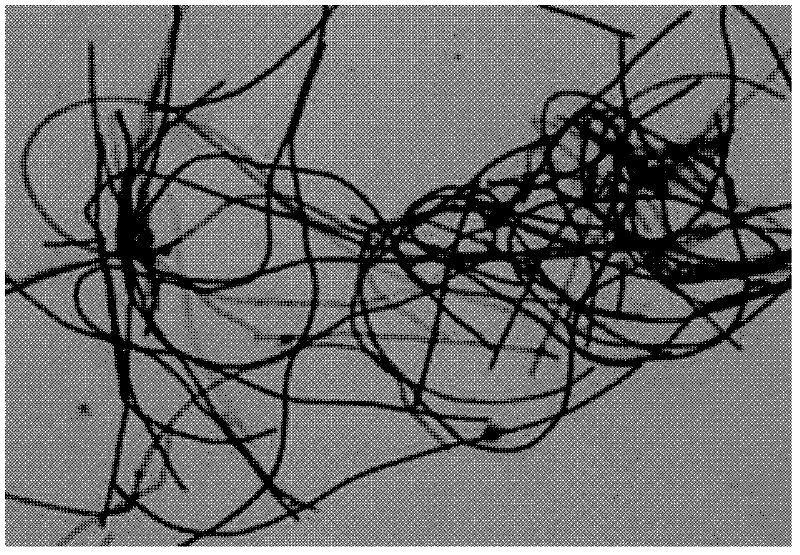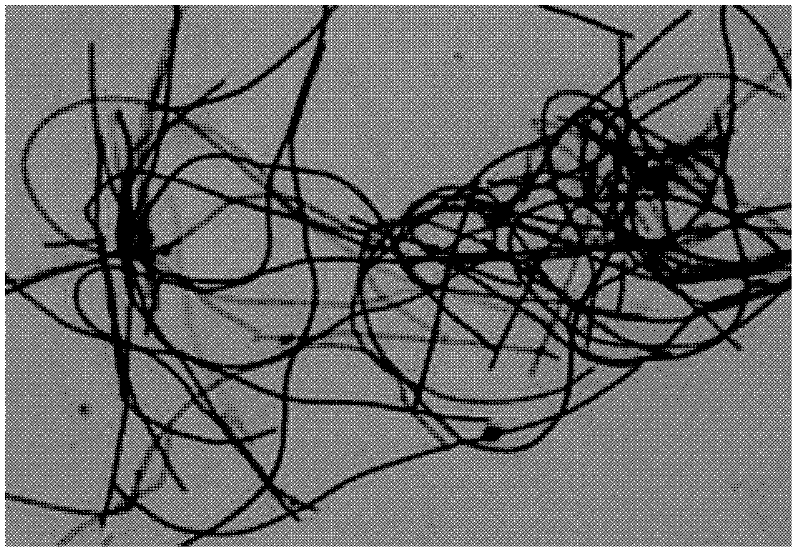Lysinibacillus sp. Gy32 and application thereof
A technology of Bacillus lysinus, GY32, applied in the field of microorganisms
- Summary
- Abstract
- Description
- Claims
- Application Information
AI Technical Summary
Problems solved by technology
Method used
Image
Examples
Embodiment 1
[0019] Take 20g of riverbed sediment from an electronic waste centralized treatment area in Shantou, Guangdong, add 80mL of sterile water to stir and disperse, and then sieve to remove plant residues and large particles; the filtrate is then centrifuged at 2000×g at room temperature for 2 minutes to remove small particles ; The obtained supernatant was centrifuged at 6000×g at room temperature for 10 minutes to collect the precipitate; the precipitate was added to 80 mL of sterile water, washed and centrifuged three times. The finally obtained precipitate was used as a seed source and inoculated into inorganic salt medium (Na 2 HPO 4 5.7mM, KH 2 PO 4 3.3mM, NH 4 Cl 18.0mM, yeast extract 1g / L, sodium succinate 20mM, sodium formate 20mM, sodium lactate 20mM, trace elements and vitamins, trace elements: 1.01mmol / L MgSO 4 , 0.5g / L MnSO 4 , 0.1g / L ZnSO 4 , 0.01g / LCuSO 4 , 0.01g / L AlK(SO 4 ) 2 , 1.0g / L NaCl, 0.1g / L FeCl 2 , 0.1g / L CaCl 2 and CoCl 2 0.1g / L. Vitamins: 2mg...
Embodiment 2
[0031] Example 2: Debromination degradation experiment of 5 μmol / LBDE209 by Lysinibacillus sp. GY32 under facultative anaerobic conditions.
[0032] Culture system composition: 5.7mmol / L Na 2 HPO 4 .12H 2 O, 3.3mmol / LKH 2 PO 4 , 18.0mmol / LNH 4 Cl, 20mmol / L sodium formate, 20mmol / L sodium lactate, 40mmol / L sodium succinate, 0.1% yeast juice, 5μmol / L BDE209, the balance is water, pH7.0. The Lysinibacillus sp. GY32 bacterial solution was inserted into the above-mentioned culture system according to the inoculum amount of 5%, and after 21 days of culture on a shaking table in the dark, the debromination amount of BDE209 was measured with an ion chromatograph DIONEX ICS-1500. The average concentration of bromide ion detected in the culture system was 351.9 μg / L, which indicated that Lysinibacillus sp. GY32 had the ability to degrade BDE209.
Embodiment 3
[0033] Example 3: Debromination degradation experiment of 5 μmol / LBDE209 by Lysinibacillus sp. GY32 under anaerobic conditions.
[0034] Culture system composition: 5.7mmol / L Na 2 HPO 4 12H 2 O, 3.3mmol / L KH 2 PO 4 , 18.0mmol / L NH 4 Cl, 20mmol / L sodium formate, 20mmol / L sodium lactate, 40mmol / L sodium succinate, 0.1% yeast juice, 5μmol / L BDE209, the balance is water, pH7.0. Introduce the Lysinibacillus sp. GY32 bacterial solution into the above-mentioned culture system according to the inoculum amount of 5%, seal it with an aluminum cover, keep it in the dark for 21 days, and use an ion chromatograph DIONEX ICS-1500 to measure the debromination of BDE209 quantity. The bromide ion concentration detected in the culture system reached an average of 28.7 μg / L, which indicated that Lysinibacillus sp. GY32 had the ability to degrade BDE209.
PUM
 Login to View More
Login to View More Abstract
Description
Claims
Application Information
 Login to View More
Login to View More - R&D Engineer
- R&D Manager
- IP Professional
- Industry Leading Data Capabilities
- Powerful AI technology
- Patent DNA Extraction
Browse by: Latest US Patents, China's latest patents, Technical Efficacy Thesaurus, Application Domain, Technology Topic, Popular Technical Reports.
© 2024 PatSnap. All rights reserved.Legal|Privacy policy|Modern Slavery Act Transparency Statement|Sitemap|About US| Contact US: help@patsnap.com










